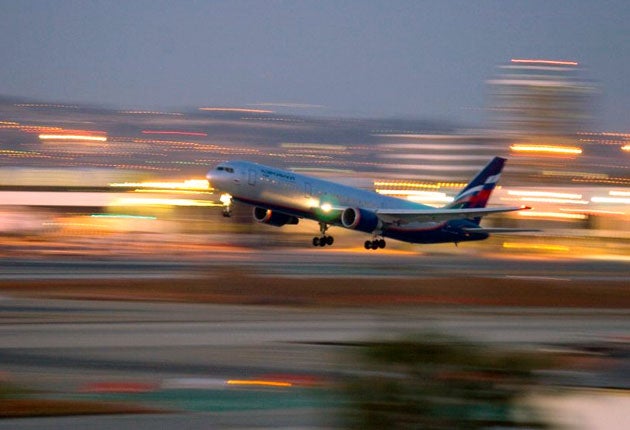Aeroflot plane left with hole in nose after striking bird mid-flight
The passenger jet was coming in to land in St Petersburg at the time

Your support helps us to tell the story
From reproductive rights to climate change to Big Tech, The Independent is on the ground when the story is developing. Whether it's investigating the financials of Elon Musk's pro-Trump PAC or producing our latest documentary, 'The A Word', which shines a light on the American women fighting for reproductive rights, we know how important it is to parse out the facts from the messaging.
At such a critical moment in US history, we need reporters on the ground. Your donation allows us to keep sending journalists to speak to both sides of the story.
The Independent is trusted by Americans across the entire political spectrum. And unlike many other quality news outlets, we choose not to lock Americans out of our reporting and analysis with paywalls. We believe quality journalism should be available to everyone, paid for by those who can afford it.
Your support makes all the difference.A huge hole was left in the nose cone of an Aeroflot passenger plane after it hit a bird mid-flight.
The flight from Sheremetyevo in Moscow was coming in to land at Pulkovo Interational Airport in St Petersburg, Russia, on 29 November when the incident took place – it is believed the bird hit as the aircraft started its descent.
No one was hurt and the plane landed safely, despite pictures depicting a large hole ripped through the front of the plane.
Margarita Potekhina, a spokeswoman for Pulkovo International Airport, told the MailOnline that the incident had taken place but that there had been no issue with landing the plane. She said the aircraft would be taken out of service for repairs.
The Independent recently reported on what happens when a bird strikes a plane.
Although bird strikes are fairly rare they're not unheard of – in 2016 there were 1,835 confirmed bird strikes in the UK, about eight every 10,000 flights.
In October a Japan Airlines plane bound for New York had to make an emergency landing due to a bird strike, while another plane was forced to return to Cardiff airport in Wales after a bird hit an engine.
Of confirmed strikes, only about 5 per cent result in damage to aircraft, but any plane that’s been struck must be thoroughly checked over. As a precaution, aeroplanes that have been struck must land at the nearest airport, where passengers are asked to disembark and are booked onto other flights so that the aircraft can be fully examined. This can have a big impact on an airline’s operations; Transport Canada estimates that the cost of strikes in North America is over $500m.
Davide Crivelli, a lecturer in mechanical engineering at Cardiff University, said: “A 2006 study reported that three-quarters of bird strikes occur below 150m, when the aeroplane would be in the initial phases of takeoff or in the final phases of landing.
“The aircraft’s speed is slower at this point and the landing gear might be extended, so quick evasive manoeuvres are difficult. The outcome generally depends on the part of the aeroplane that is affected.
“Aeroplanes are designed to withstand incredible forces, so although engineers are cautious, there is often nothing to worry about.”
Join our commenting forum
Join thought-provoking conversations, follow other Independent readers and see their replies
Comments